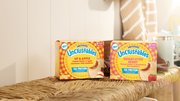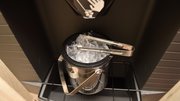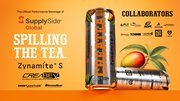Blog
Learn By Doing Practice Makes Perfect In Acquiring Sales Presentation Skills
April 16, 2015 | Len Rashkin
TAGS: Vending Times columnist, OCS salespeople, office coffee service, office coffee sales, OCS education, OCS customer service, coffee business, office refreshments, OCS sales training, Len Rashkin, hiring staff, training coffee staff |
One of the most challenging parts of running a coffee service business is hiring and training your sales staff, and that is our topic this month. This article is also for those of you who do not have a sales team, but who run their own companies and sell to new prospects.
Let's take a look at evaluating a sales presentation to a potential OCS customer. See whether you or your staff is following some important basic presentation procedures. If you conduct sales meetings, have each sales representative make a mock presentation to a buyer so the sales team can evaluate each of their colleagues. Spread the presentations over several meetings, so that each salesperson has time to prepare, and those evaluating have time to discuss what was acceptable and what was not. This is a tremendous learning experience for an underachiever.
Here is what you and your team should be looking for in a winning presentation:
1. Salesperson's appearance: Neatly dressed and well-groomed, shoes shined and an aura of confidence.
2. Friendly when approaching customer; a nice smile, looking directly into the buyer's eyes and shaking his or her hand.
3. Establishing rapport immediately by looking around the buyer's office and asking about something in view -- wall hangings, family pictures, golf award, etc., that can generate a positive answer. For example: "I love that picture of you and your family skiing, where did you go on vacation?" or "I see you are a golfer, was the tournament for a particular charity and where was it held?" Let prospects talk about themselves. You can ask them how long they have been with the company and where they had been before joining it.
4. Setting the agenda with the buyer by making a simple statement: "I am here so you can see whether we have something to offer you and your company that will enhance your coffee break service. If we do, whether we can do business together. Is that fair?"
5. Establishing credibility for the salesperson and for your company: salespeople can mention something personal about themselves, such as that they live locally, have been with the company for X years and are involved with coaching, charities, etc. Next, the salesperson talks about the company and what makes it unique: special priority equipment, some branded companies presently being serviced, and pictures showing the trucks and the staff. The presenter also shows the company brochure and product menu, but does not give the prospect the brochure or menu. Never give someone something to read while you're presenting, because they won't pay attention to what you are talking about. Hand out written information at the end of the presentation, just before you leave.
Fact-Finding
6. Qualifying the prospect for equipment, services and products (information gathering) requires asking probing questions about the prospect's needs: the number of employees working daily on premises, for example. And the presenter should ask, "On a scale of one to 10, how would you rate your current service?" If the answer is a rating less than 10, ask: "What would make them a 10?" The presenter should inquire closely about the quality and taste of current coffee, talk about water quality and how it affects coffee, discuss types of water services, and explain the waste that results from batch-brewed coffee if he or she is going to present single-cup programs (see my piece on batch-brew waste in the February issue). The presenter should describe the features and benefits of your different styles of brewing equipment and your water services. It's important to control the presentation by asking to see the break area, thus getting the prospect out of his or her office.
7. Solutions and suggestions: Sales reps should be talking about different coffees and what makes them unique. They also should suggest alternatives to current brewing equipment, services and products, and describe the features and benefits of each. The object is to rank the buyer's response to these suggestions on a scale of one to 10 as possible solutions to issues that the decision-maker mentioned. When comparing different systems with the one a prospect has, it's important to avoid criticizing that choice, or the competition, but instead to show why your system is a better answer to the prospect's wants and needs.
8. Pricing, trial closes and closing statements: The presenter should be able to address any pricing concerns that come up, use one or several trial closes, and summarize the prospect's answers to trial closing statements. For example: "You agreed that this single-cup brewer would save your company valuable employee time and eliminate the leftover wasted coffee..."). The presenter then should ask for the order by suggesting a start date to bring equipment into the facility and an opening order.
9. Exiting: The presenter should thank the buyer for the courtesy of the appointment, the time and the order, along with a handshake. If no order was placed during this visit, the salesperson should attempt to set a new date to visit, or ask whether they can call to follow up.
This style of open simulated presentations in front of peers is very effective for your training program. The preparation aspect reinforces the positive techniques, if all the salespeople have this format in front of them while they prepare. After a presentation has been made, the comments and critiques are taken more seriously by the presenter. At the next training meeting, have the previous presenter re-stage what they changed after the first presentation. Then have the next rep make a presentation.
The person playing the role of the buyer to whom your sales staff will present at each meeting must have a list of objections to use in challenging the presenter. Please let me know how this works out for you. If you have any suggestions for future articles, you can contact me at (516) 241-4883 or ocsconsultant@aol.com.
LEN RASHKIN is a pioneer in office coffee service. He founded Coffee Sip in 1968 and later merged it with Dell Coffee, of which he became president in 1991. Sales at Dell topped $7 million. He also founded the Eastern Coffee Service Association and National Beverage & Products Association. He is a speaker at national and local trade conferences, consults on OCS sales and marketing, and is the author of two OCS training programs.







